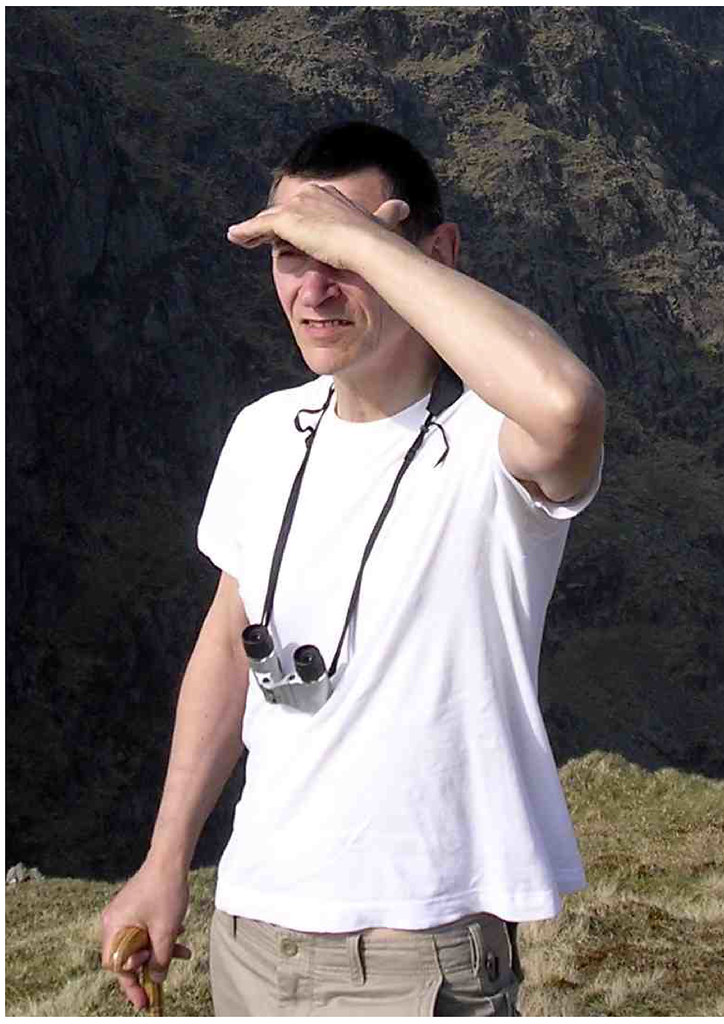The standard qualitative test for nickel is to use a solution of DMG (dimethylglyoxime). I followed the instructions in Hoke for making 20ml solution of DMG (dimethylglyoxime) in distilled water, boiling it for some time. However it deposited a bunch of crystals, and on checking online I find that it is ‘virtually insoluble’ in cold water; Merck for example says solubility is 0.6g/l. I find it inexplicable that Hoke should seem to be inaccurate on this matter. The supernatant liquid reacted with some strong nickel chloride (plating solution) to give a very faint pink precipitate. Things were (literally) much rosier when I added methylated spirits to the residue DMG crystals as well as water, to get a much stronger solution. This precipitated a heavy deposit of beetroot-red organometallic complex (see picture left), with, strangely, no trace of colouration in the supernatant liquid of the methylated spirits dye, which seemed to have 'complexed out' of it at the same time. Apparently the DMG solution needs to be not too acidic in pH for the test to work; better for it to be slightly alkaline. In more strongly acid solution, the same reagent is apparently a useful test for palladium, with which it gives a canary-yellow precipitate (which I have not tested). More information can be found from people who test meteorites; who variously suggest that the DMG should be dissolved in methanol at 10gm/litre, and that the results can be masked by many other metallic ions, especially cobalt.
2010-12-13
Testing for nickel
Posted by
Paul Jelley
at
16:34
0
comments
![]()
![]()
2010-09-08
Silversmithing at London Met
I signed up for ten 1-day sessions of silversmithing at Sir John Cass Faculty of Art, Media and Design, a school within London Metropolitan University. The sessions were tutored by Steve Wager, and financed for me by London Central YMCA as part of my continuing professional development. Sign of the times; I signed up together with only two others, both young women in their twenties. Also on the course were more than a dozen 'old timers' fairly evenly split between the sexes and mostly over fifty years old (but still mostly younger than me!). For full course notes, see my Wordpress blog at this link (opens in new window)
I found my time there hugely enjoyable, and 'bashed out' my first bowl from 1mm gilding metal (first & last stages shown above), followed by a spoon in copper,
then a pill-pot in gilding metal;
I also made a start on a larger bowl, and independently hammered a scrap silver sprue into a small spoon. I'm planning to take the Autumn term starting in early October.
Posted by
Paul Jelley
at
13:18
0
comments
![]()
![]()
2010-01-20
Discriminating between diamond and CZ
After a tip from Orchid, I placed a 2.5mm CZ and a 2.5mm diamond face-down on a sheet of white paper which had had fine alternating-colour lines drawn along it. On careful inspection with a loupe, it was apparent that one couldn’t see the coloured lines through the diamond, but they were fairly visible, though distorted, seen through the CZ (see picture in the right side-bar). The implication, in addition to giving a test for discriminating between the two materials, is that light passes from the back to the front, then gets reflected from the lined paper, before passing again to the back and out to the eye. One wonders what difference there might be if both stones were laid face-down on a light box. I also tried adding a fine-silver backing to a CZ, mindful of the beauty of Swarovski crystal. The result was very disappointing; the translucent quality of the CZ was replaced by a sense of rather dirty grey in some of the darker areas, though the general amount of light reflected didn't seem affected. I'm pretty sure there's a good reason why no-one sells foil-backed CZ...
Posted by
Paul Jelley
at
15:36
0
comments
![]()
![]()

